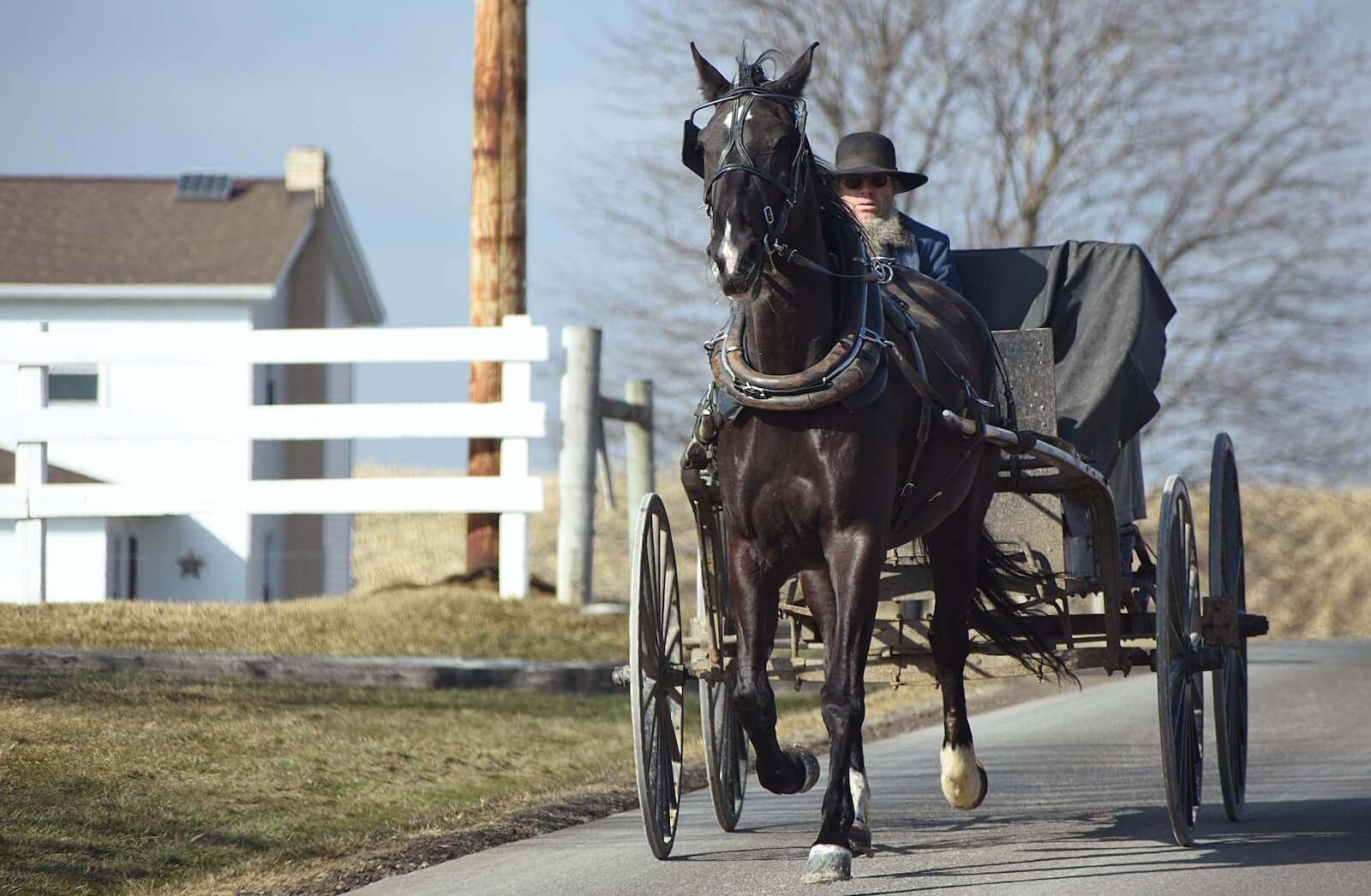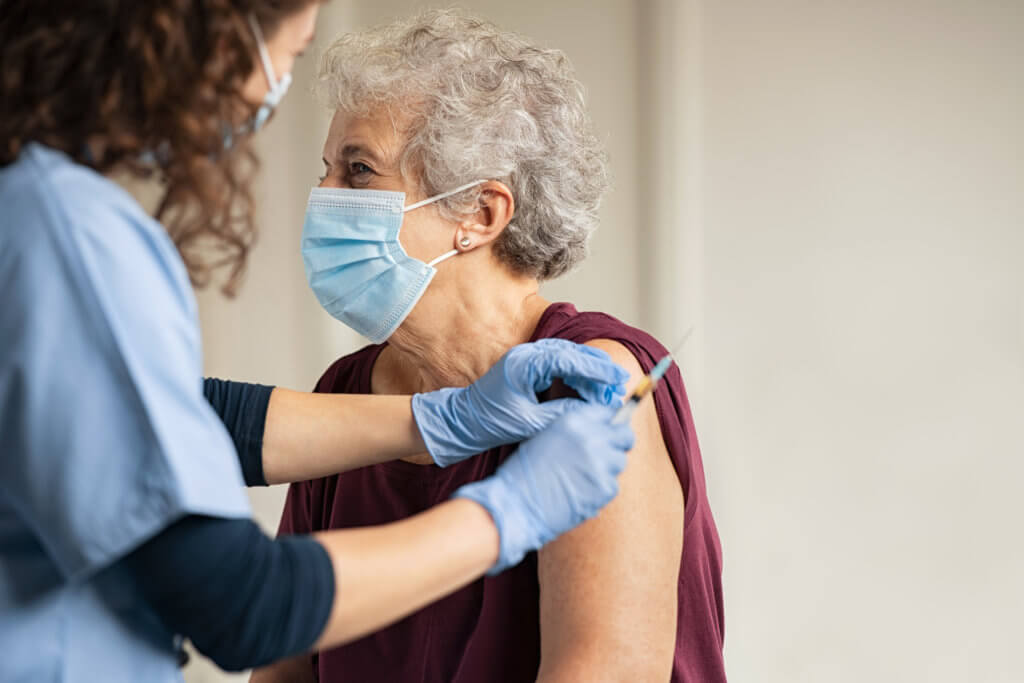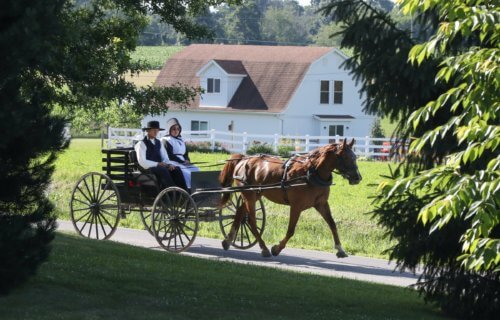UNIVERSITY PARK, Pa. — The Amish migrated to America in the early 18th century in pursuit of land to settle on and religious freedoms. Fast forward a few hundred years and today’s Amish communities live quite similarly to their ancestors. Amish beliefs espouse the virtues of plain dress, simple living, and generally avoiding the conveniences of modern technology. So, does that include modern medicine? Certain dubious sources on the Internet may want people to think so, but researchers from Penn State find that this community did, in fact, protect itself against COVID-19.
Earlier this summer, a piece of misinformation went viral claiming the Amish largely avoided COVID-19 vaccinations, apparently resulting in “a death rate 90 times lower than the rest of the United States.”
While that report was swiftly and conclusively disproven, the latest from Penn State is providing the first-ever geographically broad and population-wide evidence that the Amish do not all avoid vaccines. While researchers found that Amish communities across the country do display lower vaccination rates than other areas, they are not entirely unvaccinated.
A distinctive Christian subculture whose roots trace all the way back to the 16th Century Protestant Reformation, the Amish largely keep to themselves and have thus proven difficult to study on a scientific basis. According to Cory Anderson, an author of the study and postdoctoral fellow in Penn State’s Population Research Institute, part of the Social Science Research Institute, medical documents don’t usually ask about patients’ religious beliefs, making it even harder to assess the Amish from a medical standpoint.
Moreover, the study authors explain very few COVID-19 tests were taken in Amish areas during the pandemic, which has made investigating the impact of COVID-19 on the population difficult.
“While there is relatively little quantitative data analysis on Amish vaccination, some local studies have suggested that Amish were vaccine hesitant before COVID-19,” Anderson says in a university release. “With new population data on COVID-19 now available, we wanted to determine vaccination rates in counties with high Amish populations.”

Researchers conducted an analysis of county-level data across Amish-prevalent counties. Since county data only showed vaccination rates for the entire population, analyzing Amish-prevalent counties specifically afforded the researchers an opportunity to estimate Amish vaccination rates.
“We examined over 350 counties spanning 10 Amish-populated states from February 2021 — when the vaccines became available — through October 2022 to determine COVID-19 vaccination rates and other social demographic data from a variety of sources including the Centers for Disease Control and Prevention, U.S. Religion Census, U.S. Census, American Community Survey, and the Massachusetts Institute of Technology Election Lab,” explains Shuai Zhou, postdoctoral associate in the Department of Global Development at Cornell University and former graduate student under co-author Guangqing Chi, professor of rural sociology and demography at Penn State.
This approach led to the finding that COVID-19 vaccination rates were roughly 1.6 percent lower in Amish-populated counties compared to counties without significant Amish populations. Considering only three studied counties had an Amish population larger than 20 percent, this rate is quite notable, researchers posit. In other words, these findings indicate higher percentages of Amish in a given county significantly decreased the county-level vaccination rate. This held up even after researchers accounted for other factors expected to perhaps predict lower vaccination rates, including political ideology, rural/non-rural status, household income, and evangelical Protestant affiliation.
On average, researchers report over 10 percent more Amish population in a given county corresponded to a 16-percent drop in the monthly county-level COVID-19 vaccination rate. According to the study’s calculations, as of October 2022, Amish-populated counties showed an average daily vaccination rate of .06 percent, compared to the national average rate of .08 percent.
“The results support our hypothesis that Amish affiliation independently predicts vaccine hesitancy,” Anderson adds. “This finding supports our hypothesis that Amish are under-vaccinated for COVID-19, although not at the rate some recent commentators have suggested.”

Anderson, who is personally part of the Amish community, says he witnessed firsthand that at the start of the pandemic, most Amish were side-stepping many preventative measures. At the time, he hypothesized COVID-19 vaccination rates would be lower than the rest of the population. Still, to be crystal clear, Anderson stresses that the previously mentioned viral misinformation that all Amish avoid vaccines is totally untrue.
This work highlights the failure of public health outreach efforts to encourage Amish people to accept COVID-19 preventative measures and vaccines, Prof. Chi notes.
“Health service providers working with the Amish need to realize that it takes time to build a collaborative and trustful relationship with them, and humility goes a long way,” Prof. Chi continues.
Additionally, Anderson adds that the Amish are generally grossly unrepresented when it comes to higher education – which means supposed scientific knowledge about the Amish comes from institutions with no firsthand experience.
“This has repercussions on their response when scientific knowledge is translated into public health policy,” Anderson says. “Academia should continue to invest in resources to collaborate with this population.”
Learning more about the Amish community is important, Anderson believes, because it is a population that is growing. As the Amish flourish, they will eventually migrate to new places throughout North America.
“Their impact will be felt on rural communities, where population density is low and public resources are slim,” Anderson comments.
With this work complete, Anderson and his team are continuing to analyze data in pursuit of identifying further cultural changes during the pandemic.
“Challenging times have a way of bringing to the forefront cultural patterns that are buried deeply when life is routine,” Anderson concludes. “Challenging times reveal what a community is made of and can shape the culture moving forward.”
The study is published in the journal Population Research and Policy Review.


I do not see the actual stats for Amish residence only. You include stats of areas that include “Amish population”. This does not debunk anything. Amish may “vaccinate”, but not specifically with Covid19. Nice try though. Interesting read.
My thoughts as well.
The only front line journalism I saw on this subject was by Sharyl Attkisson on her “Full Measure” program (also viewable at the show web site). She went to Amish country and the interviews stated that they did not get the shot but all contracted Covid right away as their religious gatherings involved a shared communion cup! They got over it and went back to their Business As Usual. “News” coverage of the Amish is inconsistent and shallow thus “alt right” sites will be the only places you learn of what appears to be abusive and often selective enforcement by federal agencies like the USDA. Web search and you will find curious tales of Amish being shut down for selling to customers who choose to go the farms to buy meat and dairy products.